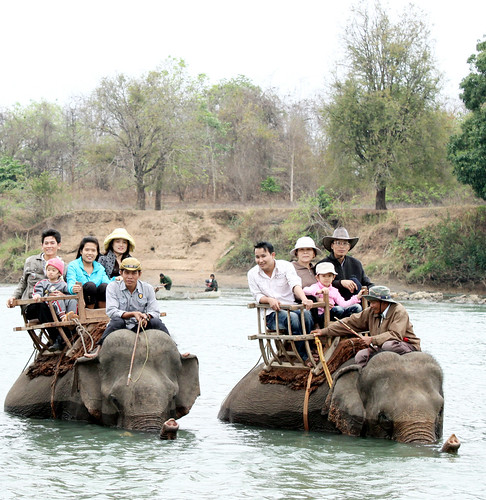"Cao lau" was considered by the Quang Nam people as a special symbol representing Hoi An.
Tourists in Vietnam travel who visit to Hoi An always remember Cao Lau, the foremost traditional food here. Cao Lau - a special food that only appears in the ancient town of Hoi An- does not taste like any other Vietnamese dish. It has something in common with Japanese and Chinese noodles, though more refined.
Unlike the flat, white, ivory noodles of "phở", Vietnam’s most popular noodle dish, Cao Lau noodles are much thicker and a bit raw. The noodles will therefore be soft, enduring and flavored with special sweet-smelling additives.

The secret of Cao Lau lies in the water; authentic Cao Lau is prepared only with water drawn from ancient Cham wells hidden around Hoi An and Quang Nam Province. Noodles are pre-soaked in well water and lye made from wood ash brought from one of the eight Cham Islands around 10 miles outside of Hoi An. The combination may seem esoteric, but local foodies can tell a difference in the taste and texture. So, Cao Lau be made anywhere else in Vietnam.
In addition, the meat used to prepare the Cao Lau must be pork loin or trotter. The pork is fried in a marinade and then roasted for 1 hour.

It's served in a steaming bowl of flat, yellow rice noodles in a broth flavored with lemon, ginger, anise, basil and mint. It is basically a rice noodle, herb, and meat dish. The dish is eaten with crisp bean sprouts, fried onions and slices of pork topping it. Cao Lau is always hot and very delicious. It is very flavorful. Its flavors have distinctions, making visitors ate once, that want to eat forever.
Also an interesting thing, when eating at Cao Lau Hoi An, tourists must climb up to high floor. They can enjoy delicious dishes and has just see beautiful scenery, just as the traders did hundreds of years ago. At any time during the day, tourists in Vietnam can enjoy Cao Lau.

People said, Cao Lau just likes a shy, discreet girl who hides herself in a simple dress and shuns expensive perfume. It’s might not be as vibrant, colorful and eye-catching as Ho Chi Minh City’s cuisine, or as tempting in appearance as Hanoi’s, but it doesn’t matter as the food of Hoi An is all about taste, taste and taste.




